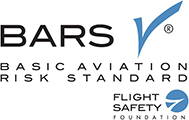An accident in April 2014 involving an unmanned aerial vehicle (UAV) or drone as they are commonly referred to, highlights a number of important issues for the Civil Aviation Safety Authority (CASA), and the operators of these unmanned aircraft.
It is alleged that the aircraft was being used to video a triathlon event and crashed injuring a competitor. There are claims that the aircraft control systems were hacked but the real circumstances and the cause of the accident are unknown at the time of writing.
UAVs have soared in popularity across the world and the aircraft and systems are becoming more sophisticated, less expensive and more accessible. They can be purchased on the internet for as little as $250.
Although CASA has legislation in place to regulate the activities of UAVs used in commercial operations, there needs to be some assurance as to the competency of all unmanned aircraft flyers even if they are using the aircraft for private operations. CASA may decide that the risk is low and opt for other than conventional regulatory measures to ensure competency of operators and safety of innocent third parties. Regardless, one would expect that those who sell the UAVs have some duty of care to ensure they are operated safely. Maybe this is the key to a low cost, low risk regulatory solution to this issue.
Drones are a part of our common language now and everyone has heard of them and basically knows of their capabilities. CASA must have a consumer and public awareness program to ensure the general public understand the basic legal requirements for the commercial operations of UAVs, the safety risks and limitations of these aircraft.
I understand that the legislation applicable to the use of UAVs Civil Aviation Safety Regulation (CASR) Part 101 is currently being reviewed after about 12 years. At the time CASA was lauded as a leader in UAV legislation because it was one of the first regulatory authorities to introduce rules to govern commercial UAV operations. Although, this legislation was a good start, like all regulation, it needs review and updating in light of new technology, changing aviation industry circumstances and societal safety expectations.
Finally, Australian the State Safety Program (SSP); the national equivalent of a Safety Management System (SMS) needs get on the front foot and start to gather safety data about the UAV industry. Without meaningful data, the regulator will always be on the back foot and at best, seek non progressive regulatory solutions for emerging safety issues.
For more information on aviation safety or technical services, please contact us consult@techsafeaviation.com


